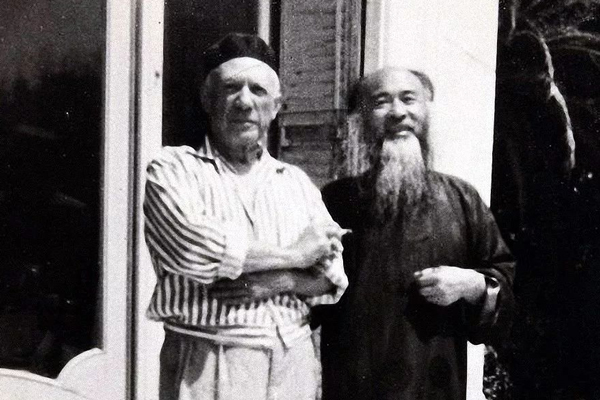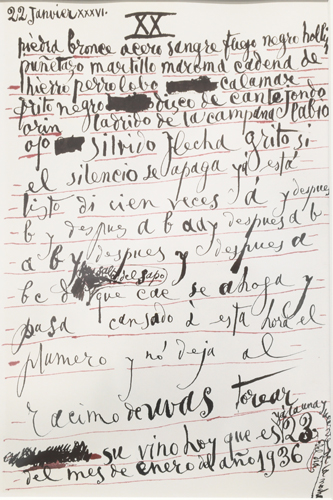 |
|
Pablo Picasso and traditional Chinese painter Zhang Daqian (right) at Villa La Californie in Cannes, France in 1956. [Photo/artron.net] |
"Picasso said once that 'I was born in Spain, I'm a painter. But if I had been born in China, I would be a poet,'" Lebrero said. "We know he loved Chinese writings and representation, and Picasso was very excited and curious about the old tradition of Chinese calligraphy."
In the 1950s, the artist met with a cultural delegation from China and Chinese painter Zhang Daqian in France. "In this exhibition, we have a fantastic document. It's the original congratulatory telegram (from Chinese author Guo Moruo) sent to Picasso when he was 80 years old," Lebrero said.
According to Lebrero, Picasso's fondness of Chinese ink never faded. "In Spanish, we call it tinta china. And he loved it. Some of his poems, in this exhibition, are made with this Chinese ink."
 |
|
One of Picasso's poems written with tinta china, or Chinese ink. [Photo by Li Wenrui/chinadaily.com.cn] |
"(The Chinese) are great inventors of pencils and ways to use ink. Picasso had a big collection of [these] instruments. He knew with these instruments he was able to do things different than the Occidental methods to draw, write or paint."
Speaking of the art community in China, Lebrero said his visit was "a good opportunity to speak with the protagonists in Beijing".
"We see more and more very good Chinese artists in Europe. This new generation of Chinese artists is changing contemporary art," he said.
If you go:
June 26 - September 30. Instituto Cervantes Beijing Branch, No.A1, Workers' Sports Complex South Road, Chaoyang district, Beijing. Tel: 010-5879-9666
Contact the writer at liwenrui@chinadaily.com.cn